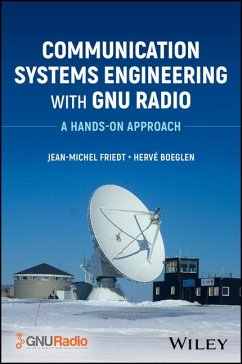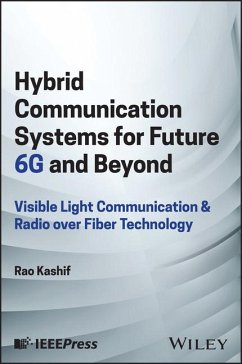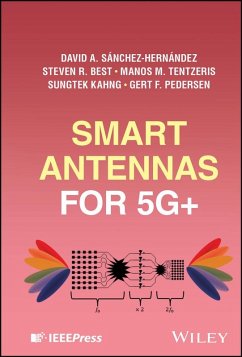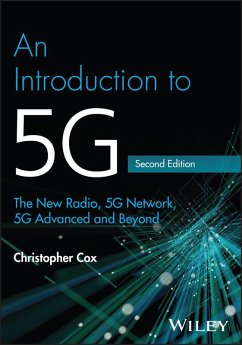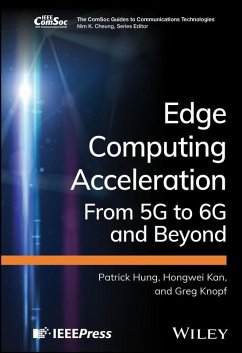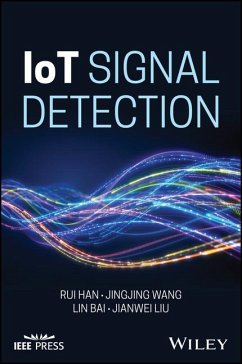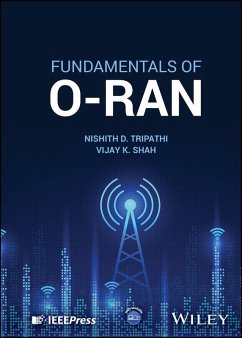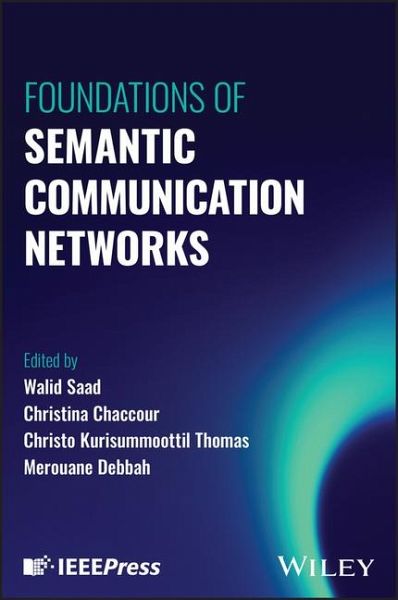
Foundations of Semantic Communication Networks
Versandkostenfrei!
Versandfertig in 2-4 Wochen
138,99 €
inkl. MwSt.
Weitere Ausgaben:

PAYBACK Punkte
69 °P sammeln!
Comprehensive overview of the principles, theories, and techniques needed to build end-to-end semantic communication systems, with case studies included. In this rapidly evolving landscape, the integration of connected intelligence applications highlights the pressing need for networks to gain intelligence in a non-siloed and ad hoc manner. The traditional incremental approach to network design is no longer sufficient to support the diverse and dynamic requirements of these emerging applications. This necessitates a paradigm shift towards more intelligent and adaptive network architectures. Fr...
Comprehensive overview of the principles, theories, and techniques needed to build end-to-end semantic communication systems, with case studies included. In this rapidly evolving landscape, the integration of connected intelligence applications highlights the pressing need for networks to gain intelligence in a non-siloed and ad hoc manner. The traditional incremental approach to network design is no longer sufficient to support the diverse and dynamic requirements of these emerging applications. This necessitates a paradigm shift towards more intelligent and adaptive network architectures. From theory to application, Foundations of Semantic Communication Networks describes and provides a comprehensive understanding of everything needed to build end-to-end semantic communication systems. This book covers various interdisciplinary topics such as the mathematical foundations of semantic communications, information theoretical perspectives, joint-source channel coding, semantic-aware resource management strategies, interoperability under heterogeneous semantic communication users, advanced artificial intelligence (AI) and machine reasoning techniques for enabling connected intelligent applications, secure and privacy-preserving semantic communication systems, and the coexistence and interoperability of semantic, goal-oriented, and legacy systems. The book examines unique features of end-to-end networking with semantic communications, including instilling reasoning behaviors in communication nodes, the role of the semantic plane in information filtering, control of communication and computing resources, transmit and receive signaling schemes, and connected intelligence device control. It emphasizes the importance of data semantics and age of information metrics. The book also discusses the profound impact of semantic communications on the telecom industry, highlighting changes in network performance, resource management, traffic, as well as spectral and energy efficiency. Furthermore, the book provides insights into the mathematical constructs and AI theories for formulating semantic information, such as topology and category theory. It explores real-world applications, case studies, and future research directions as wireless technologies transition to 6G and beyond. Written by four recognized experts in the field with a wealth of expertise from academia, industry, and research institutions, Foundations of Semantic Communication Networks addresses sample topics, including: * Novel Semantic Information Formulations: Proposing new formulations using rigorous mathematical frameworks such as category theory and algebraic topology. * Practical Applications and Networking Features: Focusing on real-world scenarios, addressing multiple access and networking challenges through collaborative frameworks for multi-modal transmissions, examining multiple access schemes to enhance transmission efficiency, and ensuring coexistence with legacy systems. * AI-Native Air Interface and Semantic-Aware Resource Allocation: Enabling efficient large-scale systems for 6G and beyond wireless systems through AI-native air interfaces and semantic-aware resource allocation strategies. * Advanced AI and Machine Reasoning: Utilizing causality and neuro-symbolic artificial intelligence for minimalistic transmissions, and achieving generalizability and transferability across contexts and data distributions to develop high-fidelity semantic communication systems. * Multi-Domain Security Vulnerabilities: Examining security vulnerabilities associated with deep neural networks in semantic communications, and proposing encrypted, privacy-preserving semantic communication systems (ESCS) as a solution. Foundations of Semantic Communication Networks is an excellent forward-thinking resource on the subject for readers with a strong background in the subject matter, including graduate-level students, academics, practitioners, and industry researchers.




